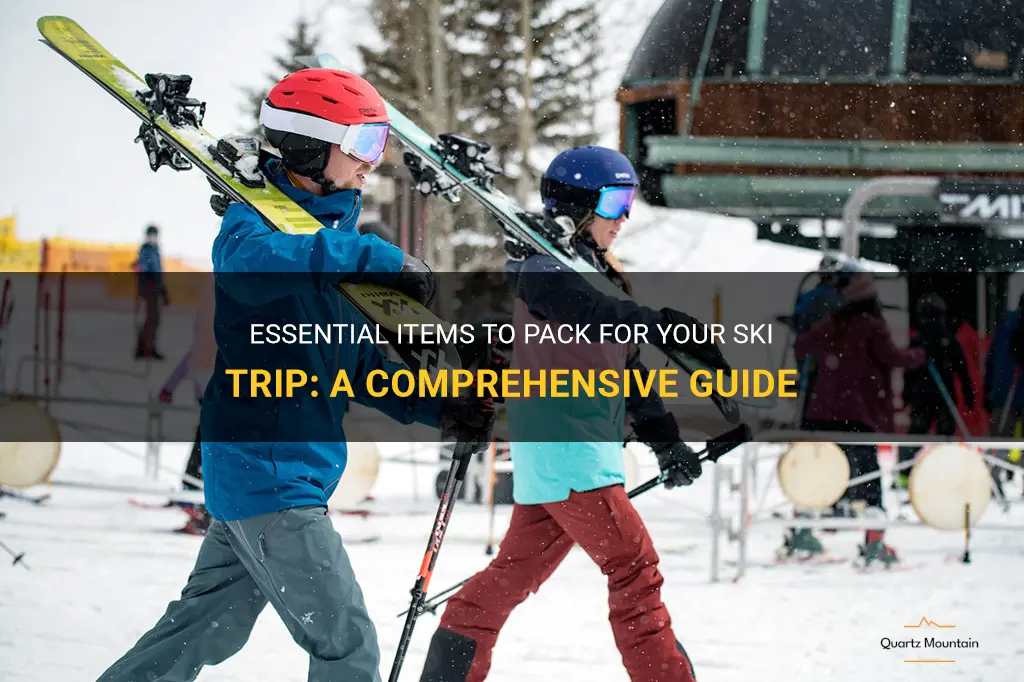
Are you gearing up for an exciting ski adventure? Whether you're a seasoned pro or a first-time skier, packing the right essentials can make or break your trip. From the perfect gear to the right clothing and accessories, our comprehensive guide has got you covered. So, grab your checklist and get ready to hit the slopes with confidence!
| Characteristics | Values |
|---|---|
| Clothing | Warm and waterproof jacket, Pants, Thermal base layers, Fleece or sweater, Gloves, Hat or beanie, Socks |
| Accessories | Ski goggles, Sunglasses, Helmet, Neck gaiter or balaclava, Hand and toe warmers, Backpack or ski bag |
| Footwear | Ski boots, Thermal socks |
| Equipment | Skis/snowboard, Bindings, Ski poles, Helmet, Boots bag |
| Safety Gear | Avalanche beacon, Probe, Shovel, First aid kit |
| Miscellaneous | Sunscreen, Lip balm, Snacks, Water bottle, Cash or credit card, ID and insurance card, Ski pass or lift tickets, GPS or phone with ski tracking app |
What You'll Learn
- What essential clothing items should I pack when going skiing?
- What equipment should I bring when going on a skiing trip?
- Are there any specific toiletries or personal care items I should bring for a skiing trip?
- What accessories or additional items should I consider packing for a skiing trip?
- Are there any specific items I should pack for different weather conditions while skiing?

What essential clothing items should I pack when going skiing?
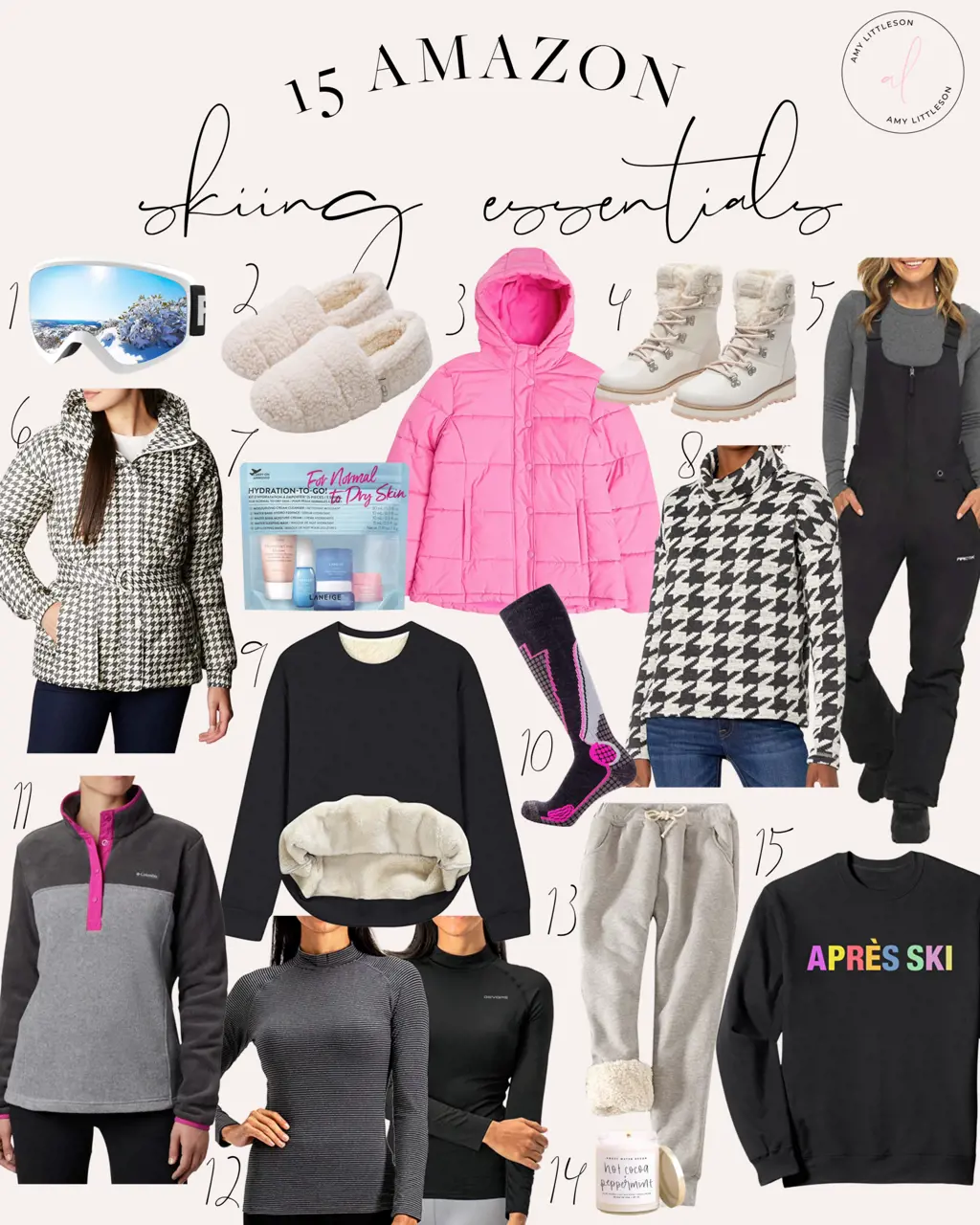
When planning a skiing trip, it's essential to pack the right clothing items to ensure your comfort and safety on the slopes. Here are some essential clothing items you should include in your packing list.
- Base Layers: Start with a good set of base layers, which are designed to wick moisture away from your skin. Opt for a moisture-wicking fabric such as merino wool or synthetic materials like polyester. These base layers will help regulate your body temperature and keep you dry throughout the day.
- Thermal Socks: Invest in a few pairs of thermal socks to keep your feet warm and dry. Look for socks that are specifically designed for skiing, as they will provide extra padding and support in all the right places. Avoid cotton socks, as they tend to absorb moisture and can lead to cold feet.
- Ski Jacket and Pants: A waterproof and insulated ski jacket and pants are a must-have to protect you from the elements. Look for jackets and pants with breathable fabrics, so you don't get too sweaty when active. It's also important to have a jacket with a hood to keep your head dry during snowfall.
- Gloves or Mittens: Cold hands can ruin your skiing experience, so investing in a good pair of gloves or mittens is essential. Look for gloves or mittens that are waterproof and insulated. Mittens tend to be warmer than gloves because they allow your fingers to stay close together, but gloves offer more dexterity if you need to adjust your gear frequently.
- Helmet: Safety should always be a priority when skiing. Wearing a helmet can protect you from head injuries in case of a fall or collision. Make sure to choose a helmet that fits properly and is certified for skiing.
- Goggles: Skiing in bright sunlight or snowy conditions can be challenging for your eyes. A pair of goggles with UV protection and anti-fogging properties is a must. Look for goggles that fit snugly over your helmet and provide a wide field of vision.
- Neck Gaiter or Balaclava: A neck gaiter or balaclava can provide extra warmth and protection for your face and neck. Choose one made from a moisture-wicking fabric that can be easily adjusted to cover your nose and mouth in extremely cold conditions.
- Mid-Layer: Depending on the weather conditions, you may also need a mid-layer for extra warmth. A fleece or down jacket can provide insulation without adding too much bulk. Look for a mid-layer that is lightweight and easily packable.
- Ski Socks: In addition to thermal socks, it's important to wear a pair of ski-specific socks for added comfort and support. These socks are designed to fit snugly and provide cushioning in areas prone to pressure points and blisters.
- Base Layers for Apres Ski: Don't forget to pack some comfortable and warm base layers for after skiing. You'll want something cozy to change into while relaxing in the lodge or going out for dinner.
Remember to check the weather forecast before your trip and pack accordingly. It's better to be over-prepared than underprepared when it comes to dressing for skiing. By packing these essential clothing items, you'll be ready to hit the slopes and enjoy your skiing adventure to the fullest.
The Essential Packing List for a Stress-Free Cruise Vacation
You may want to see also

What equipment should I bring when going on a skiing trip?
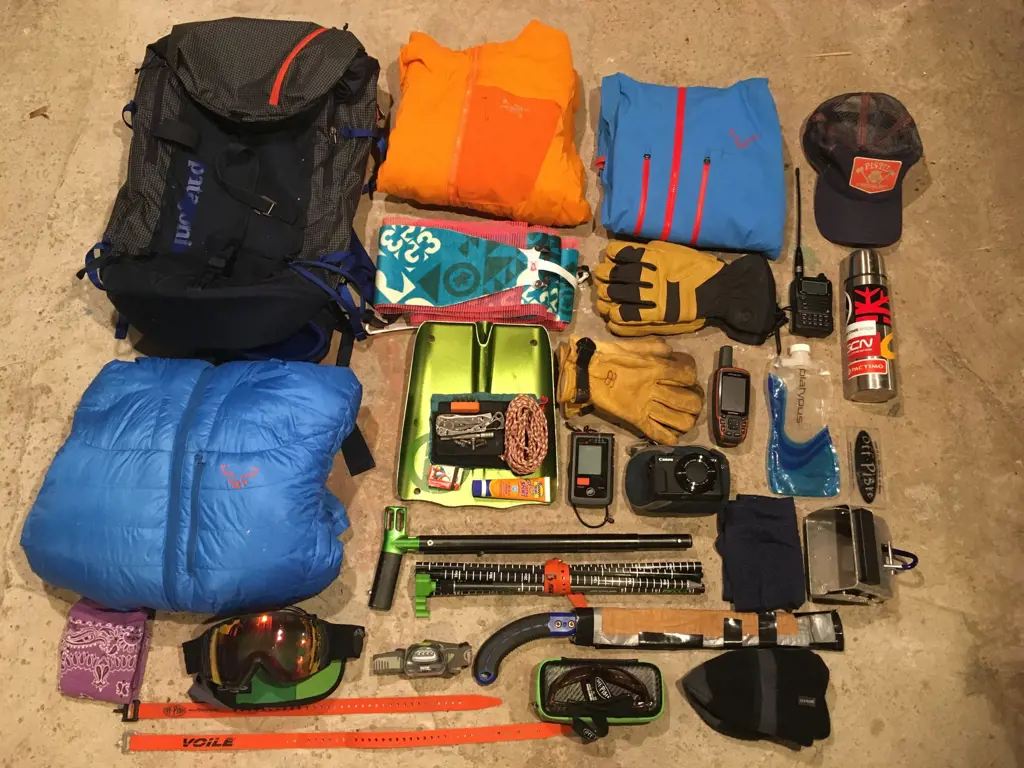
When planning a skiing trip, it's crucial to come prepared with the right equipment to ensure a comfortable and safe experience on the slopes. Here are some essential items that you should bring with you:
- Skis or Snowboard: Depending on your preference and skill level, make sure to bring your skis or snowboard. It's important to choose the right size and type of equipment that suits your ability and the skiing conditions of the area you will be visiting. If you don't own any, you can consider renting them from a local skiing shop.
- Ski Boots or Snowboard Boots: Properly fitted boots are vital for your comfort and control on the slopes. Make sure to bring your own boots that fit you well, or again, you can rent them from a local shop. Remember, it's essential to choose boots that are comfortable and provide good ankle support.
- Ski Poles: These will provide you with stability and help maintain balance while skiing. Make sure to choose poles that are the right length for your height and skiing style.
- Helmet: Safety should always be a priority when skiing. Wearing a helmet is crucial to protect your head from injuries in case of a fall or collision. There are different types of helmets available, so choose one that fits well and has proper ventilation.
- Goggles: The right pair of goggles will protect your eyes from the sun, wind, snow, and glare. They should have a good fit and provide clear vision in different weather conditions. Make sure to bring goggles with interchangeable lenses to adapt to various lighting conditions.
- Layers of Clothing: Dressing appropriately for skiing is essential to stay warm and comfortable throughout the day. Start with a moisture-wicking base layer that will keep your skin dry and prevent you from getting too cold or sweaty. Layer up with a fleece or down jacket for insulation, followed by a waterproof and breathable outer shell to keep you protected from snow and wind. Don't forget to bring thermal socks, gloves or mittens, and a hat or headband to keep your extremities warm.
- Sunscreen: Even when it's cold outside, the sun's rays can still be strong and reflective on the snowy slopes. It's crucial to protect your skin from UV radiation by applying a high SPF sunscreen on any exposed areas of your body.
- Backpack: Having a backpack will allow you to carry any extra clothing layers, water, snacks, and other small essentials like a map, wallet, or phone. Make sure your backpack is comfortable and has enough space to fit everything you need for the day.
- Avalanche Safety Equipment (if needed): In certain regions and off-piste skiing, it's crucial to carry avalanche safety equipment, including a transceiver, probe, and shovel. Make sure to familiarize yourself with how to use them, and consider taking an avalanche safety course if you're planning on skiing in backcountry areas.
- First Aid Kit: As accidents can happen, it's always a good idea to have a small first aid kit with you. Include items such as bandages, antiseptic ointment, pain relievers, and any other personal medications you might need.
Remember, this is a general list of essential equipment to bring on a skiing trip. It's always a good idea to research the specific skiing resort or area you'll be visiting to ensure you have the appropriate gear for the local conditions and terrain. Additionally, if you're a beginner, consider taking skiing or snowboarding lessons to learn the basics and improve your skills before hitting the slopes.
Essential Items to Pack for a Week in Lisbon
You may want to see also

Are there any specific toiletries or personal care items I should bring for a skiing trip?
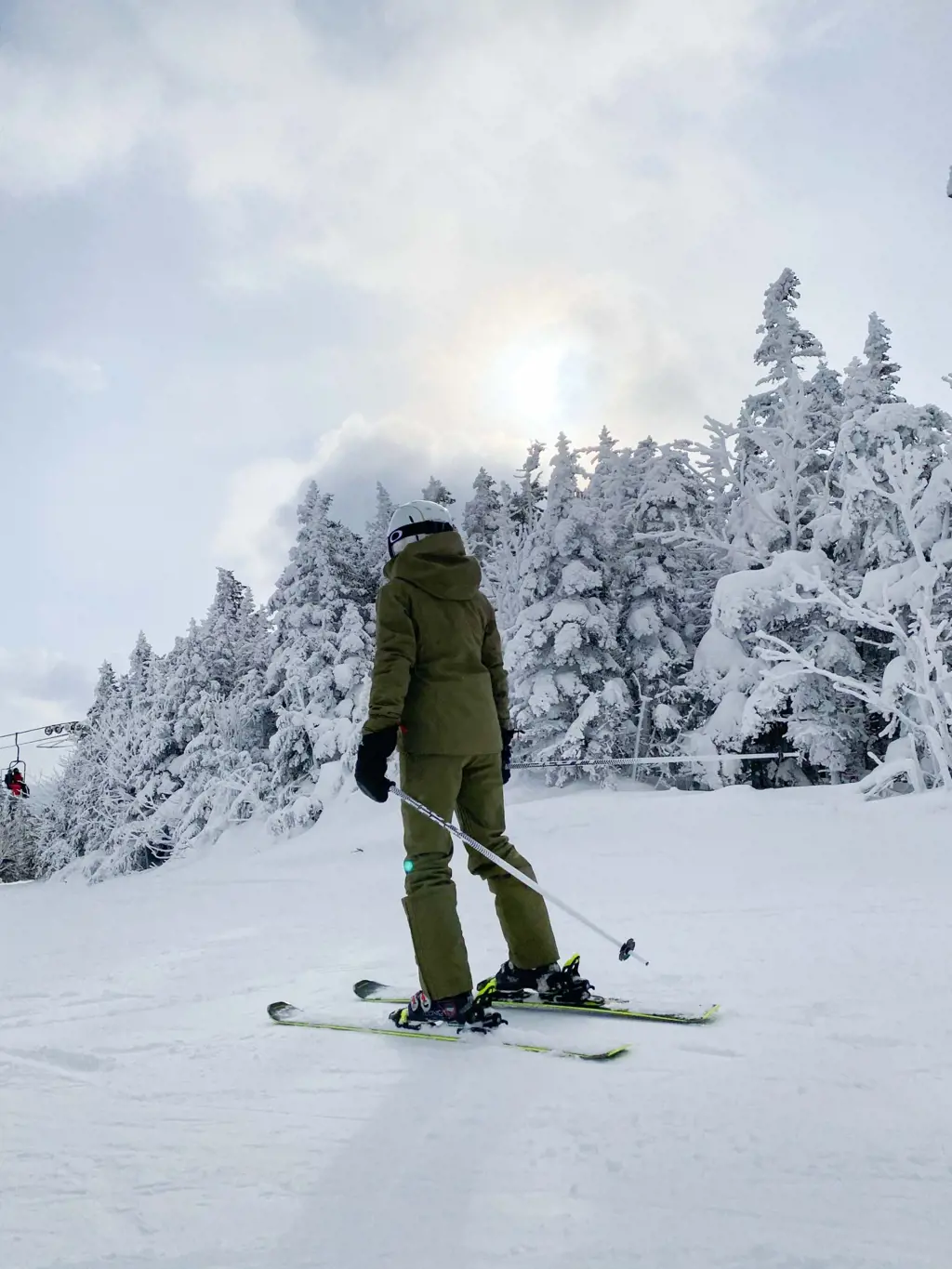
When it comes to packing for a skiing trip, most people tend to focus on the obvious essentials such as warm clothing, ski equipment, and accessories. However, it's equally important to remember to pack the right toiletries and personal care items to ensure a comfortable and enjoyable experience on the slopes. Here are some specific items you should consider bringing for your skiing trip:
- Sunscreen: Skiing involves spending long hours outdoors, often at higher altitudes where the sun's rays are more intense. It's crucial to protect your skin from harmful UV radiation by using a high SPF sunscreen. Opt for a water-resistant formula and don't forget to reapply it throughout the day.
- Lip balm: The cold temperatures and wind can be harsh on your lips, leading to dryness and chapping. Carry a moisturizing lip balm with SPF to protect your lips from the elements.
- Moisturizer: Skiing in cold weather can cause your skin to become dry and dehydrated. Packing a good moisturizer will help keep your skin nourished and prevent it from getting overly chapped or irritated.
- Hand cream: Constant exposure to cold air and snow can deplete your skin's natural moisture, leading to dry and rough hands. A hand cream is essential to keep your hands moisturized and protected throughout your skiing trip.
- Tissues or wet wipes: Skiing can make your nose runny, and it's always handy to have tissues or wet wipes to clean your face and hands. Choose travel-sized packs to save space in your backpack.
- Pain relievers: Skiing can be physically demanding, and muscle soreness or minor injuries are not uncommon. Bringing pain relievers like ibuprofen or acetaminophen can help alleviate any discomfort and ensure you can continue enjoying your time on the slopes.
- First aid kit: It's always a good idea to have a basic first aid kit with you, including items like band-aids, antiseptic ointment, and blister pads. Accidents can happen, and it's best to be prepared and have the necessary supplies to tend to any minor injuries.
- Travel-size toiletries: To save space and ensure you have everything you need, opt for travel-sized toiletries such as shampoo, conditioner, body wash, and toothpaste. You can also find travel-sized versions of other personal care items like deodorant and hair products.
Remember to pack these toiletries and personal care items in a waterproof bag or pouch to protect them from any moisture or snow. Additionally, check the airline regulations and guidelines regarding the size and quantity of liquids and toiletries you can carry in your cabin baggage.
By packing these specific toiletries and personal care items for your skiing trip, you can ensure that you are well-prepared for the physical demands and harsh conditions of the slopes. Taking care of your skin, lips, and overall well-being will make your skiing experience much more enjoyable and comfortable.
The Essential Items for Your Conference Bag: A Comprehensive Guide
You may want to see also

What accessories or additional items should I consider packing for a skiing trip?
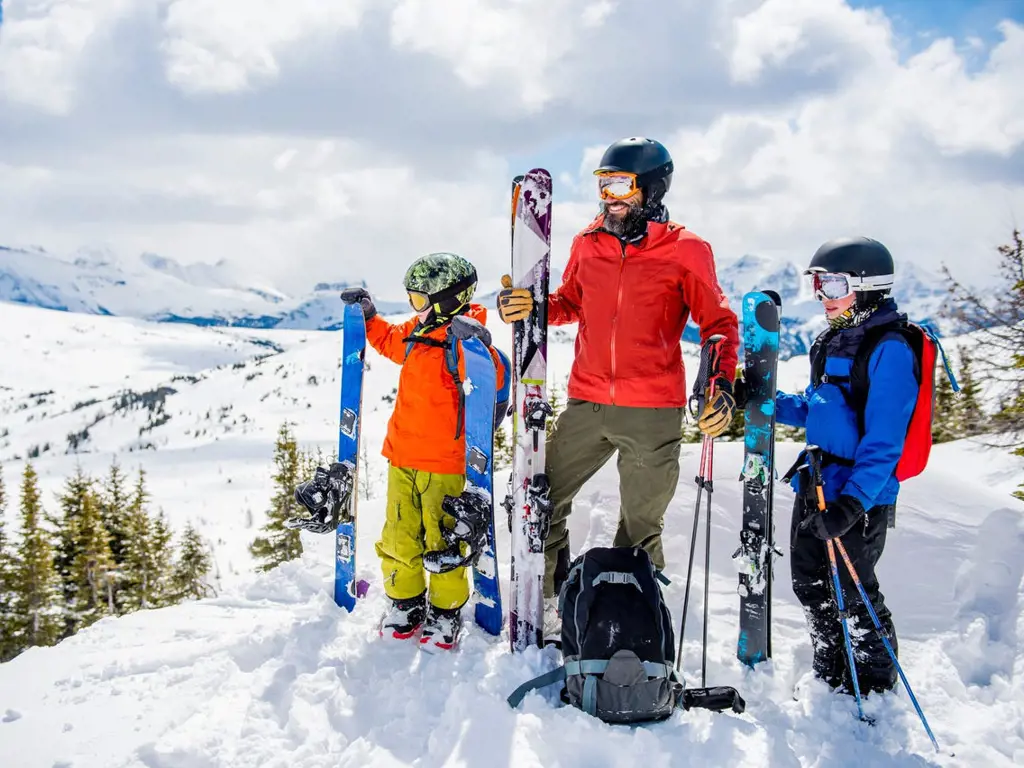
When packing for a skiing trip, it's important to not only bring the essentials but also consider additional accessories and items that can enhance your experience and ensure your safety on the slopes. Here are some key items to consider packing for your next skiing adventure:
- Helmet: Safety should always come first when skiing, and a helmet is a must-have accessory. It protects your head from potential injuries and gives you peace of mind while enjoying the slopes. Make sure to choose a helmet that fits properly and meets safety standards.
- Goggles: Skiing often involves harsh weather conditions and bright sunlight. A good pair of goggles provides protection against snow, wind, and UV rays, while also enhancing visibility. Look for goggles with anti-fog and polarized lenses for better clarity.
- Neck warmer or scarf: Keeping your neck warm and protected from the cold winds is crucial. A neck warmer or scarf not only adds an extra layer of warmth but also prevents snow from entering your jacket. Opt for moisture-wicking fabrics like merino wool or synthetic blends for better insulation.
- Base layers: Having the right base layers is key to staying warm and comfortable on the slopes. Look for thermal tops and bottoms made from moisture-wicking materials such as merino wool or synthetic fabrics. These fabrics help to regulate body temperature and keep you dry by wicking away sweat.
- Hand warmers: Cold hands can make skiing uncomfortable and challenging. Hand warmers are small pouches that generate heat when exposed to air. They can be easily slipped into your gloves or pockets to provide instant warmth when needed.
- Ski socks: Proper ski socks are essential for keeping your feet warm, dry, and comfortable. Look for socks made from moisture-wicking materials that provide cushioning and support in all the right areas. Avoid cotton socks as they tend to absorb moisture and can lead to cold and clammy feet.
- Sunscreen: Even on overcast days, the sun's rays can be harsh at high altitudes. Protect your skin from sunburn by applying a high SPF sunscreen before hitting the slopes. Choose a water-resistant formula and don't forget to reapply throughout the day.
- Lip balm with SPF: Lips are often neglected when it comes to sun protection, but they can easily become chapped and sunburned while skiing. Use a lip balm with SPF to keep your lips hydrated and shielded from the sun's harmful rays.
- Waterproof outerwear: Make sure your jacket and pants are both waterproof and breathable to keep you dry and comfortable on the slopes. Look for materials like Gore-Tex or similar fabrics that offer both water resistance and breathability.
- Backpack: A small backpack is handy for carrying essentials such as snacks, water, and extra layers. Look for one with straps to secure your skis or snowboard when not in use.
- Ski lock: If you plan on stopping for a meal or taking a break, a ski lock can give you peace of mind. It allows you to secure your skis or snowboard while you're away, deterring potential theft.
- Hand and foot warmers: In addition to hand warmers, consider packing foot warmers as well. These can be inserted into your ski boots to provide extra warmth and comfort on chilly days.
- Ski tuning kit: If you're an experienced skier, consider bringing a ski tuning kit. This will allow you to maintain your skis' performance throughout your trip by sharpening edges and waxing the base.
- Portable phone charger: Cold temperatures can drain your phone's battery faster than usual. A portable phone charger ensures you have backup power to capture those memorable moments on the slopes or to make emergency calls if needed.
By packing these accessories and additional items for your skiing trip, you can maximize your comfort, safety, and enjoyment while on the slopes. Remember to check the weather and resort regulations before packing to ensure you're adequately prepared for any conditions you may encounter.
Essential Items to Pack in Your Delivery Bag
You may want to see also

Are there any specific items I should pack for different weather conditions while skiing?
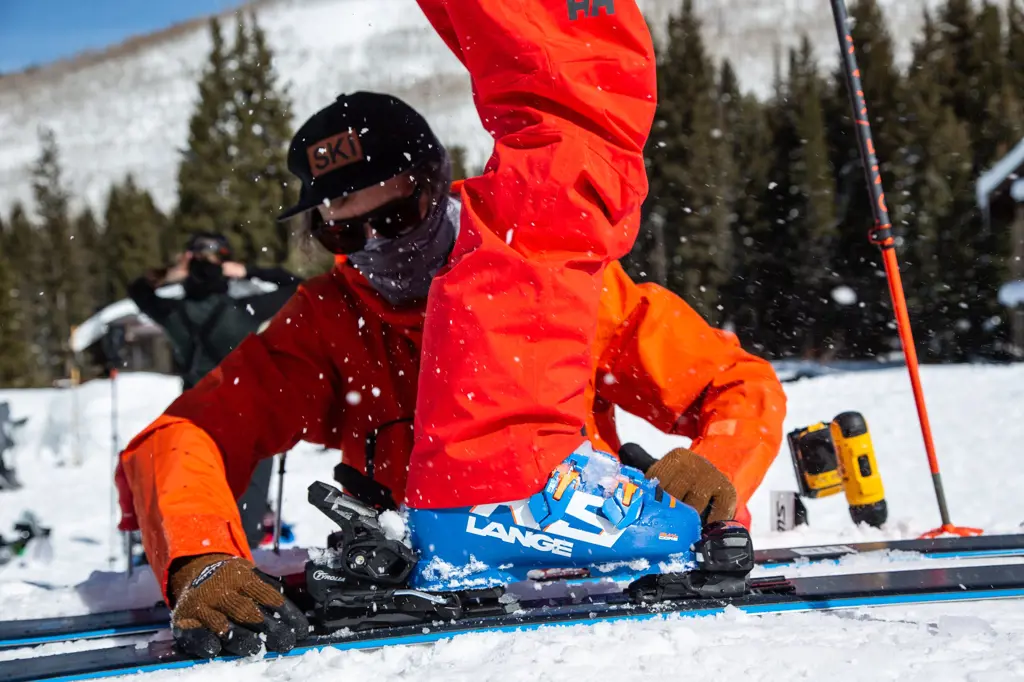
When it comes to skiing, having the right gear can make all the difference. One important aspect to consider is the weather conditions you will be skiing in. Different weather conditions require different items to ensure optimal comfort and safety on the slopes. In this article, we will explore the specific items you should pack for various weather conditions while skiing.
Cold Weather:
When skiing in cold weather, it is crucial to have proper insulation to keep you warm. Here are some essential items to pack:
- Base Layers: Wearing moisture-wicking base layers helps to regulate your body temperature and keep you dry.
- Insulated Jacket and Pants: These provide extra warmth and protection against the cold.
- Hat and Helmet Liner: Keep your head and ears warm with a thermal hat and helmet liner.
- Gloves or Mittens: Choose gloves or mittens with insulation to protect your hands from the cold.
- Neck Gaiter: A neck gaiter helps to keep the cold air out and retain heat around your neck and face.
- Hand and Toe Warmers: These can be a lifesaver in extremely cold conditions, providing additional warmth to your hands and feet.
Wet Weather:
If you are skiing in wet weather conditions, it's important to stay dry to prevent discomfort and hypothermia. Here are some items to pack for wet weather skiing:
- Waterproof Jacket and Pants: Ensure your outerwear is waterproof or water-resistant.
- Waterproof Gloves or Mittens: Look for gloves or mittens that are specifically designed for wet conditions.
- Waterproof Socks: Invest in waterproof or moisture-wicking socks to keep your feet dry.
- Goggles with Anti-Fog Coating: Foggy goggles can impair your visibility, so opt for goggles with anti-fog coating or ventilation to keep them clear.
- Extra Layers: Pack extra base layers and mid-layers in case you need to change into dry clothes.
Sunny Weather:
Skiing under the bright sun can be enjoyable but can also expose you to harsh UV rays and glare. Here are some items to pack for skiing in sunny weather conditions:
- Sunscreen: Apply a high SPF sunscreen to protect your skin from the sun's harmful rays, even on cloudy days.
- Sunglasses or Goggles with UV Protection: Protect your eyes from the sun's glare and harmful UV rays with sunglasses or goggles that offer UV protection.
- Lip Balm with SPF: Keep your lips moisturized and protected from sunburn with a lip balm that has SPF.
- Light and Breathable Clothing: Choose lightweight and breathable clothing to stay comfortable in the sun's heat.
Windy Weather:
Skiing in windy conditions can make the temperature feel much colder, and also affect your visibility. Here are some items to pack for skiing in windy weather:
- Windproof Jacket: A windproof jacket will help block the wind and keep you warm.
- Windproof Pants: Look for pants that have wind-resistant properties.
- Neck Buff: A neck buff can be worn over your face to protect it from the cold wind.
- Ski Goggles with Good Ventilation: Wind can cause your eyes to tear up, so choose goggles with good ventilation to reduce fogging and maintain clear vision.
In conclusion, packing the right items for different weather conditions while skiing is essential for comfort and safety. Whether you are skiing in cold, wet, sunny, or windy weather, make sure you have the appropriate gear to keep yourself warm, dry, and protected from the elements. By being prepared, you can fully enjoy your skiing experience and make the most of your time on the slopes.
The Essential Packing List for a Semester in Barcelona
You may want to see also
Frequently asked questions
When going skiing, it is crucial to pack items such as thermals, ski socks, a waterproof and insulated ski jacket, ski pants, gloves or mittens, a hat or beanie, and a neck gaiter or scarf. These items will help keep you warm and protected from the elements while on the slopes.
Yes, it is recommended to pack extra layers when going skiing. The weather conditions on the mountain can change rapidly, so having options for layering allows you to adjust your clothing accordingly. Bring extra base layers, mid-layers, and a lightweight down jacket or vest that can be easily packed if not needed.
For après-ski activities, it is ideal to pack comfortable and casual clothing. This can include items such as jeans or leggings, a cozy sweater or hoodie, and comfortable footwear like boots or sneakers. Additionally, don't forget to pack any necessary toiletries for freshening up after a day on the slopes.
Whether to bring your own ski equipment or rent it at the resort depends on personal preference, convenience, and cost. If you own high-quality and well-fitted equipment, it may be more comfortable to bring your own. However, renting equipment at the resort can save you the hassle of transporting it and might be a more cost-effective option, especially for occasional skiers.
In addition to the clothing and ski equipment, it is crucial to pack items such as sunscreen, lip balm with SPF, goggles or sunglasses, a helmet, and a backpack. These items will help protect you from the sun's rays, provide clear vision on the slopes, ensure safety, and provide storage for essentials like water, snacks, and extra layers.







